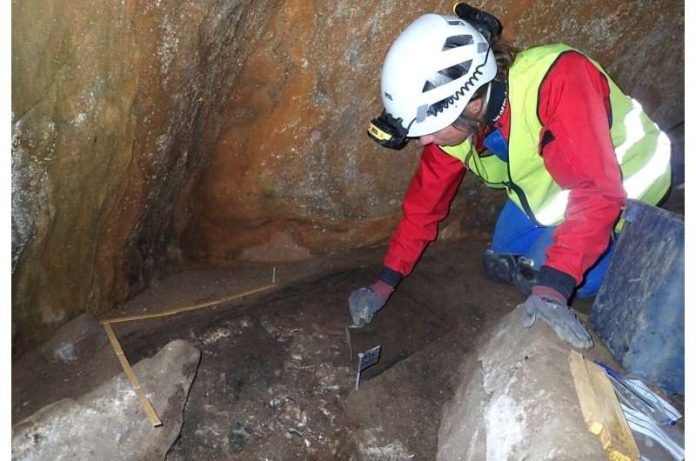
In the serene landscapes of Nordland, Norway, nestled within a unique cave, scientists have unearthed a treasure trove of ancient animal bones that offer a glimpse into a world long gone.
Led by Professor Sanne Boessenkool and her team from the Department of Biosciences at the University of Oslo, this remarkable discovery sheds light on the animal diversity that thrived after the last ice age and provides crucial insights into the effects of climate change on wildlife.
The cave, a rare find in itself due to its extensive deposits from a time long past, was brought to light during construction work near Narvik. What makes this cave particularly exceptional is the preservation of numerous bone remains, untouched by human activity or modern disturbances.
This discovery is the result of a collaborative effort involving archaeologists, geologists, biologists, and researchers from several universities and industries.
At the heart of this research is the use of advanced techniques like osteology—the study of bones—and DNA barcoding, a method that allows scientists to identify species from small, damaged bone fragments that traditional methods can’t classify.
This innovative approach has enabled the team to identify as many as 40 different animals that lived near the cave between 5,000 to 13,000 years ago.
Among the findings are species that mirror the current migration patterns seen today due to a warming climate. Remarkably, the team identified remains of forest birds such as grouse and fish like Seriola, known as amberjacks, which are moving northward again in response to contemporary climate changes.
The oldest layers of sediment in the cave, dating back to 13,000 years ago, reveal a time when the sea level was higher, and the climate was colder. Here, the researchers found species adapted to cold conditions, such as cod and ling.
This contrasts with more recent layers, where evidence of a warmer climate brought different species to the area, including freshwater fish arriving shortly after the ice retreated, almost 9,500 years ago.
This study not only enhances our understanding of past biodiversity but also underscores the implications of climate change on animal migration and diversity.
While it’s clear that our planet has undergone significant climatic shifts before, the current changes attributed to human activity carry a distinct urgency.
As Professor Boessenkool points out, while the past can inform our understanding, it doesn’t diminish the seriousness of today’s anthropogenic climate change.
The painstaking analysis of the material from the cave, coupled with the meticulous DNA work in ancient DNA laboratories, has pieced together a detailed picture of life after the ice age.
This research highlights the invaluable role caves play as natural archives, preserving the remnants of prehistoric life and offering scientists a window into the ecological shifts over millennia.
As we face the challenges of modern climate change, the lessons learned from the past become ever more relevant, guiding our understanding of biodiversity’s intricate dance with the shifting climate.
This study not only enriches our knowledge of prehistoric life in the far north of Norway but also serves as a reminder of the delicate balance between life and the environment it inhabits.
The research findings can be found in Science Advances.
Copyright © 2024 Knowridge Science Report. All rights reserved.



